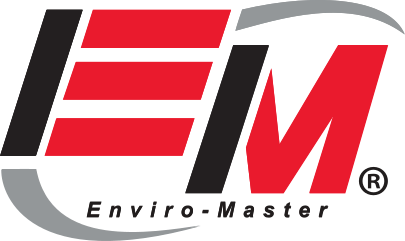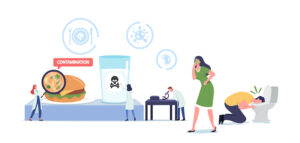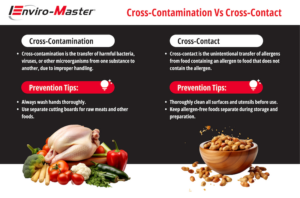When it comes to maintaining hygiene in the food service industry, the terms ‘cross-contamination’ and ‘cross-contact’ often surface, leaving many to wonder about their meanings, their differences, and most importantly, how these issues can be prevented in a bustling commercial kitchen. These crucial matters revolve around food safety, public health, and satisfying customers with varied dietary needs and restrictions.
Simply put, cross-contamination involves the transfer of harmful bacteria or other microorganisms from one substance to another—usually between raw and cooked or ready-to-eat foods—which can lead to serious foodborne illnesses. Cross-contact, on the other hand, refers to the mixing of an allergenic food (or its residue) with a non-allergenic one, posing serious risks for individuals with food allergies or sensitivities. Though they sound similar, it is essential to understand and distinguish between them, given their potential consequences on a restaurant’s clientele and reputation.
Navigating these matters might seem daunting, but with expert assistance, it becomes easily manageable. This is where the expertise of Enviro-Master can help mitigate the problems of cross-contamination and cross-contact. Operating across North America, Enviro-Master has earned numerous accolades, establishing itself as a leading commercial health and safety company. With a comprehensive understanding of commercial cleaning techniques and their use to control bacteria, Enviro-Master is dedicated to supporting restaurants with their specialized health and safety services.
Understanding Cross Contamination
Let’s begin by exploring the concept of cross-contamination. Picture this: You are meal prepping for your busy restaurant kitchen. You are cutting raw chicken on a plastic cutting board, and once done, you directly move on to slice fresh fruits, deploying the same cutting board. This may seem like an innocent act of multitasking, but in reality, it opens the doors for a phenomenon known as cross-contamination.
Cross-contamination refers to the unintentional transfer of harmful bacteria or other microorganisms from one substance, usually raw food, to another food product, which is typically cooked or ready-to-eat. For instance, when the raw meat’s substances come into contact with the fresh fruits through the same cutting board, the fruits may get infected with harmful bacteria such as listeria monocytogenes or salmonella from the raw meat. The fruits that are supposed to be served fresh may pass on the bacteria to the consumer, causing foodborne illnesses and compromising food safety.
Risks
The repercussions of cross-contamination can be severe, causing a range of foodborne illnesses. Besides the immediate health hazards, such practices can damage a restaurant’s reputation, steering customers away and potentially inviting scrutiny from food safety regulators.
Preventing Cross-Contamination
Preventing cross-contamination involves maintaining meticulously clean surfaces and following proper food preparation protocols. It’s necessary to clean and sanitize the cutting boards, countertops, and all the utensils rigorously between different food items. Another effective way to prevent cross-contamination is by using separate utensils, cutting boards, and plastic bags for different types of food—particularly distinguishing between raw food items and those that are ready-to-eat.
While diligent personal hygiene, such as washing hands frequently, can drastically reduce the risk of cross-contamination, restaurants dealing with a high volume of food need to adopt more specialized processes to ensure optimal hygiene. This level of vigilance and industrial-grade sanitation requires professional knowledge and expertise. For instance, food manufacturers in the United States must follow stringent food safety practices to counter the risk of cross-contamination.
Understanding Cross Contact
Imagine you are preparing a gluten-free sandwich for a customer diagnosed with Celiac Disease. Unaware of the need for unique precautions, you insert a gluten-free bread slice into a toaster that was just used to toast regular, gluten-containing bread. Without realizing it, you’ve just put your customer at risk of a severe allergic reaction. This inadvertent yet hazardous incident exemplifies cross-contact.
Risks
Cross-contact occurs when an allergenic food, or even the minutest residue of it, comes into contact with a non-allergenic food, which can subsequently trigger allergic reactions for individuals with food allergies or sensitivities.
For individuals with allergies, severe allergic reactions to even traces of a food allergen can be life-threatening. People with gluten-related disorders can also undergo adverse reactions if their food comes into direct contact with any gluten-containing food. For those with conditions like Celiac disease or gluten sensitivity, even mere traces of gluten in their gluten-free food can have severe consequences.
Preventing Cross-Contact
Preventing cross-contact requires more than general clean practices. It involves a more careful and conscientious approach to food preparation. Separate utensils and toasters for different types of food are crucial. Other small but significant measures involve washing hands and dishes with warm, soapy water before preparing allergen-free food. Also, designating specific appliances or zones in the kitchen for preparing allergen-free foods can be enormously beneficial.
Understanding cross-contact is particularly indispensable when serving customers with food allergies or dietary restrictions. It becomes the restaurant’s responsibility to ensure that every single customer can enjoy their meal without fearing an allergic reaction due to cross-contact.
The Importance of Establishing a Plan to Avoid Cross-Contamination and Cross-Contact in Food Services
Now that we have understood the potentially significant consequences of cross-contamination and cross-contact in the restaurant business, the importance of establishing a detailed plan to prevent these occurrences can’t be emphasized enough.
Catering to the diverse diets and health considerations of your customers is key to running a successful food service business. People come with unique dietary needs and restrictions, which every restaurant should respect and accommodate. For instance, customers following a strict gluten-free diet due to Celiac disease are not just seeking gluten-free ingredients but also the assurance that their meal is entirely devoid of gluten contamination — a reassurance that can only come from meticulous prevention of cross-contact.
Understanding and respecting dietary needs is not just a matter of customer satisfaction but a question of public health. According to the Centers for Disease Control and Prevention, roughly 48 million people get sick, 128,000 are hospitalized, and 3,000 die from foodborne illnesses each year in the United States alone. Therefore, reliable food safety practices are a civic responsibility no established food service can choose to ignore.
Preventing cross-contact and cross-contamination requires a strategy that combines employee training, color-coding utensils, and implementing a thorough cleaning process, among others. Staff training is crucial for anyone handling food to understand what cross-contact and cross-contamination are and how to prevent them. Employees must fully comprehend the consequences of not cleaning surfaces with appropriate sanitization materials, the risks of using the same cutting board for raw and cooked foods, and the necessity of thoroughly washing their hands at appropriate times.
Cleaning Processes
Implementing a rigorous cleaning process is another critical tactic. Just wiping the surface before handling a new food substance will not completely eliminate the risk of cross-contact or cross-contamination. Employing more rigorous cleaning methods, such as scrubbing surfaces with hot water and detergent, followed up with sanitization using chemicals or heat, can provide a much more reliable defense against these issues.
How Enviro-Master Can Help Maintain Hygiene in Food Services

Offering a broad range of restaurant cleaning services, Enviro-Master envisions a world in which restaurants prioritize not only taste and presentation but also health and safety. Their deep cleaning service involves meticulously sanitizing every nook and corner, ensuring not a bit of allergen protein or harmful bacteria remains.
Restaurant-Tailored Services
Enviro-Master’s Restroom & Hygiene service is a testament to their commitment to total cleanliness. Carried out by trained health and safety technicians, this service includes methods like electrostatic spraying, an innovative technique that provides long-lasting protection against germs, effectively combating the risk of cross-contamination.
This service extends to cover areas that are often overlooked but can be hotspots for attracting microbes. This includes a robust Drain Treatment Service for restaurant sinks and grease traps, combined with an Electrostatic Spraying Service that coats surfaces with a germicide – a highly recommended service for high foot-traffic businesses like restaurants.
In line with this comprehensive ethos, the Hand Hygiene Program by Enviro-Master looks beyond mere cleanliness. Acknowledging that a substantial bulk of interaction in a restaurant happens through hand contact, they help maintain the necessary hand sanitizing solutions to ensure a bacteria-free, safe environment.
Entrusting restaurant hygiene to Enviro-Master thus not only ensures effective cleaning but also upholds your restaurant’s image as a business that values its customers’ safety and guarantees exceptional hygiene standards.
Reach out to Enviro-Master today and give your restaurant the safety & cleanliness it deserves!
Resources:
“Avoiding Cross-Contact.” FoodAllergy.Org, www.foodallergy.org/resources/avoiding-cross-contact. Accessed 20 Nov. 2023.
“Avoiding Cross-Contact.” FoodAllergy.Org, www.foodallergy.org/resources/avoiding-cross-contact. Accessed 20 Nov. 2023.
“Burden of Foodborne Illness: Findings.” Centers for Disease Control and Prevention, Centers for Disease Control and Prevention, 5 Nov. 2018, www.cdc.gov/foodborneburden/2011-foodborne-estimates.html.




